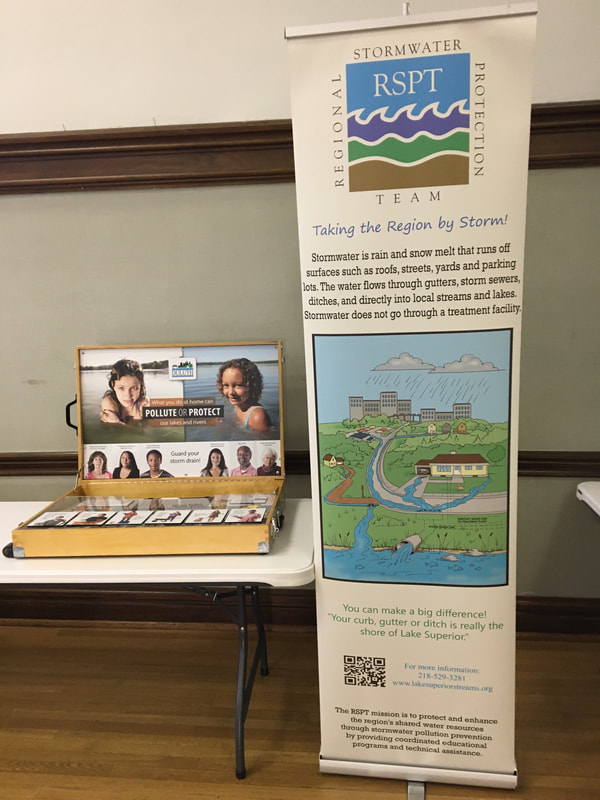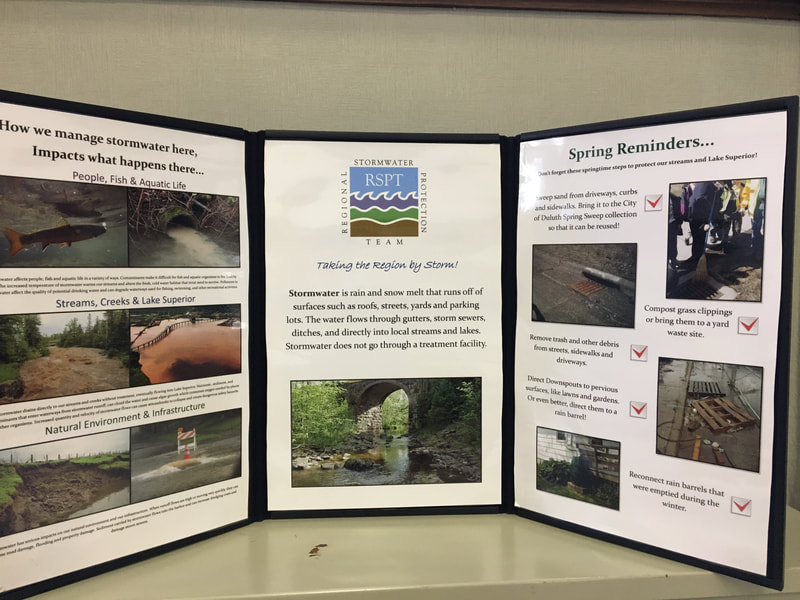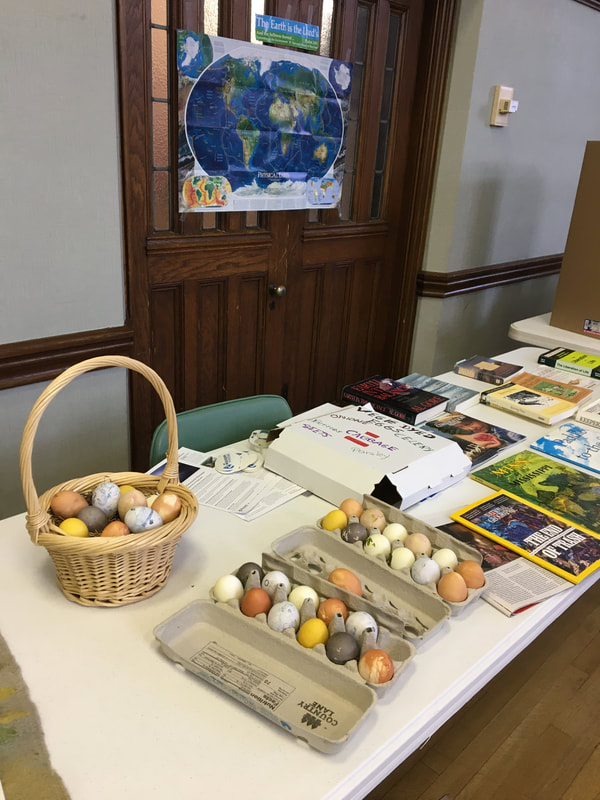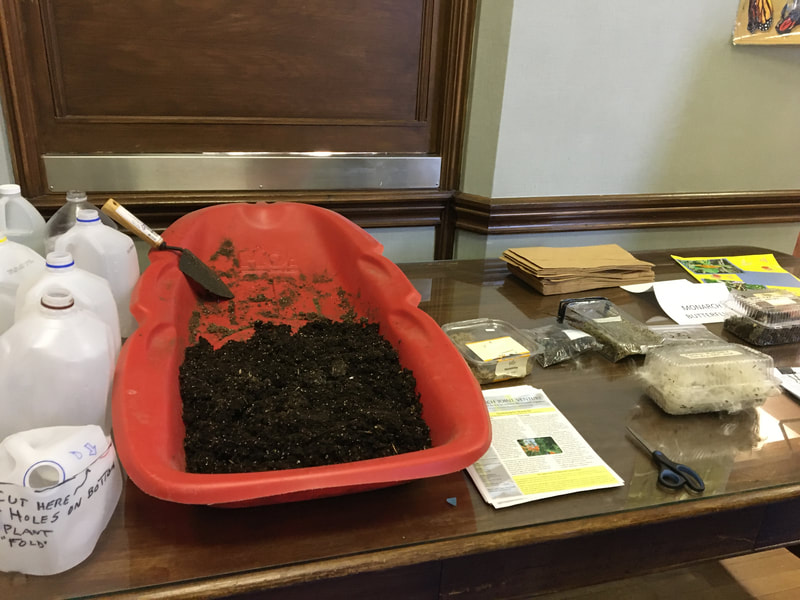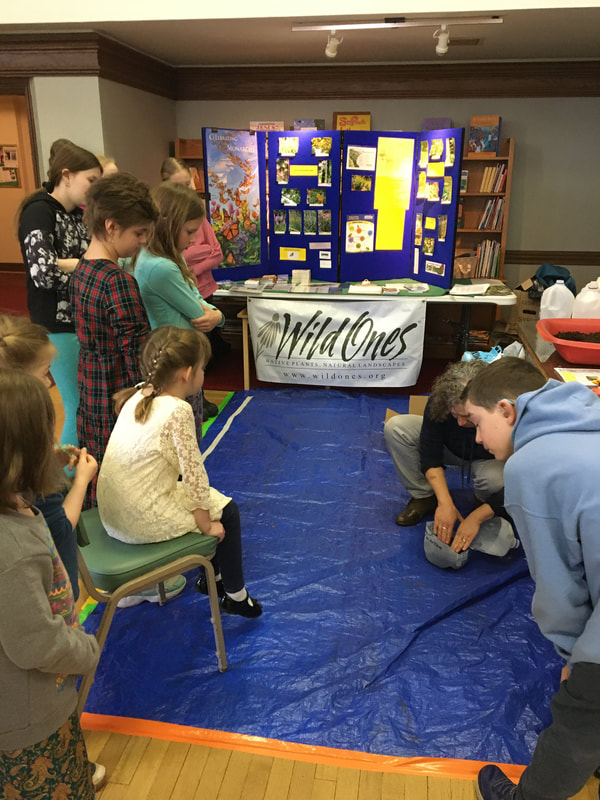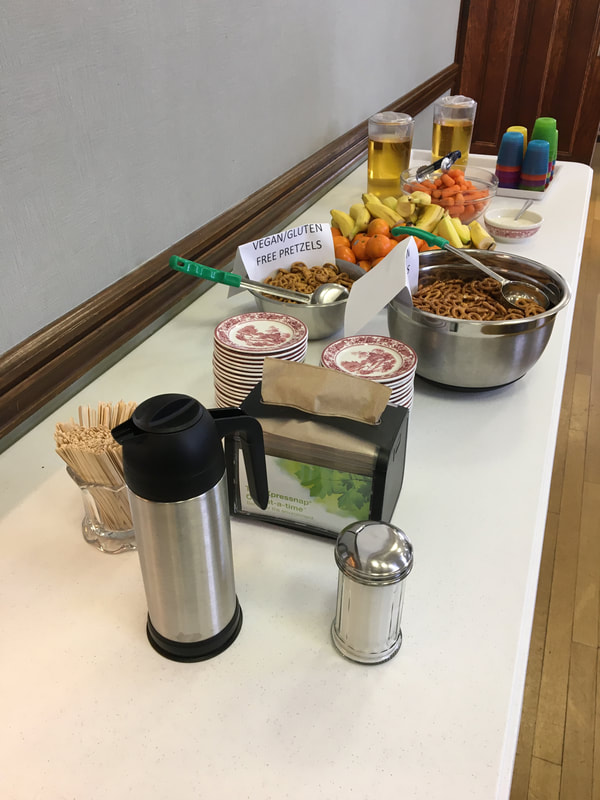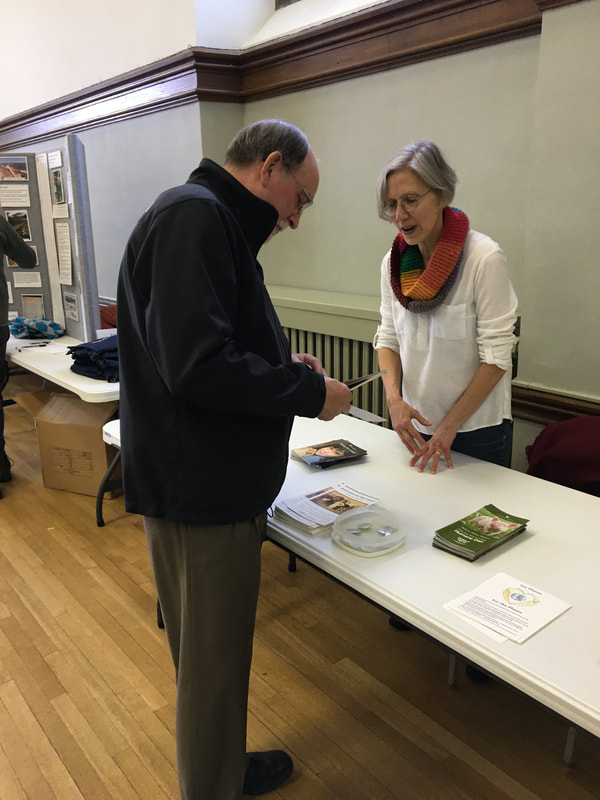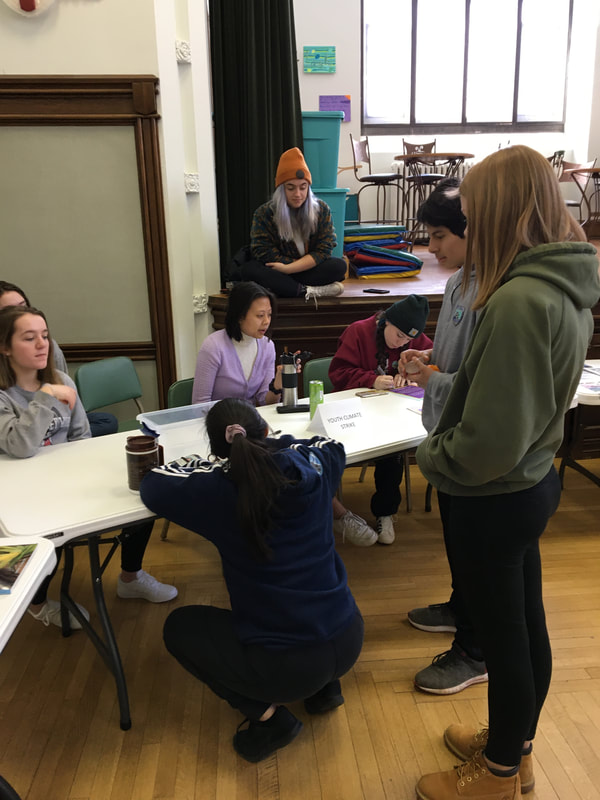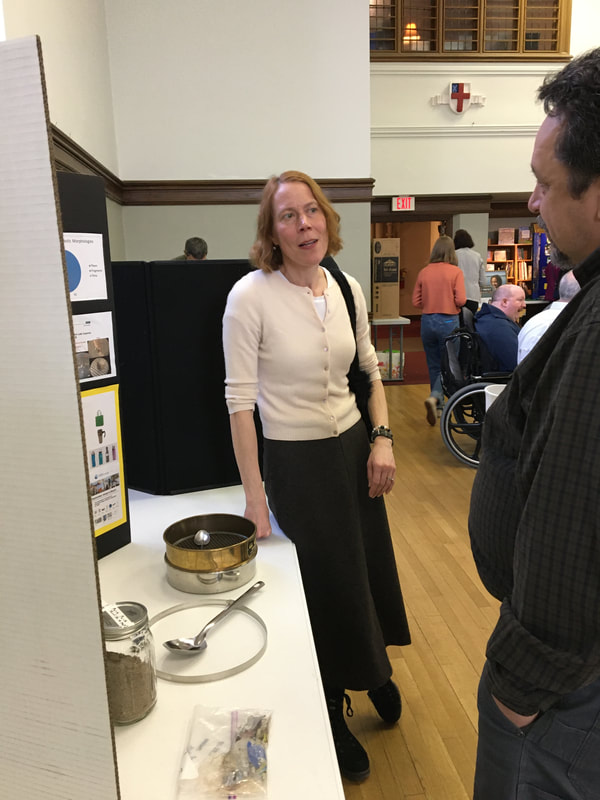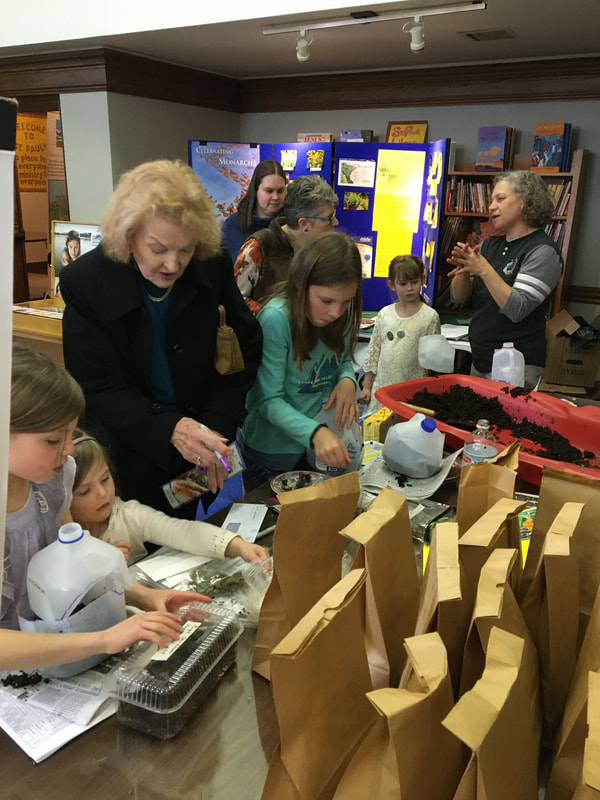Photos of the Lent Festival held March 1, 2020
What's Lent all about?
“Lent” comes from the Anglo-Saxon word lencton – meaning “spring” or “lengthening” from the time of year when the days grow long. The season begins on Ash Wednesday (March 2, 2022) and ends with the Easter Triduum (Maundy Thursday through Easter Day, April 14-17, 2022), covering 40 days (excluding Sundays which are little feasts of the Resurrection). Some believe that the word “Lent” may derive from the Latin lentare, which means “to bend.” This understanding reinforces a sense of Lent as a time of preparation for personal and collective transformation. Lent becomes the time to look truthfully at ourselves and make changes.
|
|
|
What are those Ashes on people's foreheads on Ash Wednesday?
|
Ash Wednesday takes its name from the ashes used as early as the 3rd century to publicly signify contrition. With roots in the ancient Jewish festival of Yom Kippur, the Day of Atonement, it is a day to honestly face one’s self – to be one with God, our neighbor, all of creation and ourselves. It began to be observed in the 7th century as a time for disciplining penitents. By the 11th century, Christians had come to recognize the universal need for self-examination and repentance. Believers began to be blessed with ashes on their foreheads as they began their Lenten fast as a reminder that we are dust, and to dust we return.
|
|
Three ways to Experience Lent through Fasting, Prayer and Almsgiving:
Fasting and Feasting During Lent:
Make more room for God this Lent by choosing not to do some things (fasting) and by choosing to do other things (feasting). Fasting is an integral part of Lent. Traditionally it has included reducing the amount of food we eat and abstaining from meat. We fast to allow our physical hunger to remind us of our spiritual hunger, our need for God. The purpose of fasting is to turn our attention to both God and others.
Things to fast from…
• watching television • using foul language • buying new things: clothes, music, magazines, jewelry • snack or junk foods • spending money on entertainment • being angry at other people • holding resentments • gossiping • being dishonest
Feasting- The dictionary defines a feast as “something that gives unusual or abundant pleasure.” Jesus tells us what gives us the most real and lasting joy: it is sharing ourselves in love for others, for our friends, our family, and also for our neighbors in need. During Lent, we pay attention to feasting on joy, compassion, service, and hope so that we might grow in faith all year long.
Things to feast on…
• prayer • acts of kindness to others • forgiveness • participating at Church • participating in liturgy and Eucharist • giving our time in service • participating in the Sacrament of Reconciliation • acts of service and charity • giving money or food/clothing to people who are hungry or in need.
Prayer:
+ Read the story of Palm Sunday, Jesus’ entry into Jerusalem, in the Gospels of Matthew 21:1-11 or Mark 11:1-10 or Luke 19:28-40.
+Read the story of the Last Supper of Jesus in chapter 13 of the Gospel of John, verses 1-15.
+Read the story of Easter chapter 20 of the Gospel of John, verses 1-9.
+Pray the “Our Father” three times today—in the morning when you get up, at noontime,
and when you go to bed.
+Say a prayer for someone who is sick today.
+Pray for a forgiving heart and ask the people you have hurt to forgive you.
+Participate in Ash Wednesday services with your family.
+Rent the video, The Prince of Egypt, The Greatest Miracle Ever Told, or Jesus of Nazareth
+List three blessings you have been given. Say a prayer to God, giving thanks for the
blessings in your life.
+Pray for the children and families who are homeless, and think about ways you and your
family might help them.
Almsgiving/Serving:
Giving to others is important throughout the year, but especially during Lent. Households can prayerfully consider what portion of their income they will share with those in need. Collecting money or food for those in need is an act of discipleship that recalls the practice of almsgiving of the early Church.
Things to fast from…
• watching television • using foul language • buying new things: clothes, music, magazines, jewelry • snack or junk foods • spending money on entertainment • being angry at other people • holding resentments • gossiping • being dishonest
Feasting- The dictionary defines a feast as “something that gives unusual or abundant pleasure.” Jesus tells us what gives us the most real and lasting joy: it is sharing ourselves in love for others, for our friends, our family, and also for our neighbors in need. During Lent, we pay attention to feasting on joy, compassion, service, and hope so that we might grow in faith all year long.
Things to feast on…
• prayer • acts of kindness to others • forgiveness • participating at Church • participating in liturgy and Eucharist • giving our time in service • participating in the Sacrament of Reconciliation • acts of service and charity • giving money or food/clothing to people who are hungry or in need.
Prayer:
+ Read the story of Palm Sunday, Jesus’ entry into Jerusalem, in the Gospels of Matthew 21:1-11 or Mark 11:1-10 or Luke 19:28-40.
+Read the story of the Last Supper of Jesus in chapter 13 of the Gospel of John, verses 1-15.
+Read the story of Easter chapter 20 of the Gospel of John, verses 1-9.
+Pray the “Our Father” three times today—in the morning when you get up, at noontime,
and when you go to bed.
+Say a prayer for someone who is sick today.
+Pray for a forgiving heart and ask the people you have hurt to forgive you.
+Participate in Ash Wednesday services with your family.
+Rent the video, The Prince of Egypt, The Greatest Miracle Ever Told, or Jesus of Nazareth
+List three blessings you have been given. Say a prayer to God, giving thanks for the
blessings in your life.
+Pray for the children and families who are homeless, and think about ways you and your
family might help them.
Almsgiving/Serving:
Giving to others is important throughout the year, but especially during Lent. Households can prayerfully consider what portion of their income they will share with those in need. Collecting money or food for those in need is an act of discipleship that recalls the practice of almsgiving of the early Church.
Traditions of Lent:
Liturgical Color is purple and is used in vestments and altar linens for penitence and royalty.
* Ashes (prepared from the previous year’s palms symbolize our mortality and sorrow for our sins. Job (Job 42:6) and the king of Ninevah (Jonah 3:6) put ashes on their foreheads as a sign of repentance, while also wearing sackcloth
* Putting Away the Alleluia: The Church has the custom of not speaking or singing the word “Alleluia” during Lent. Expressing joy, putting it “away” for Lent is like putting away a favorite toy for a while –to appreciate it better later. Churches often take banners down; eliminate flowers in the sanctuary. A symbolic ritual to help children move into this season is to “say goodbye” to the Alleluia.
*Making Pretzels: The pretzel has been used during Lent for over 1500 years. It is thought that originally pretzels were made by monks to resemble arms crossed in prayer. These breads were called “little arms.” This can have deep spiritual meaning for us during Lent. Since basically only flour and water are used, pretzels can remind us of fasting.
Here is a simple recipe:
Ingredients: 1 cake yeast, 1 ½ cup warm water, 1 tsp. salt, 1 T. sugar, 4 cups flour
Directions: Dissolve yeast in warm water and sugar for about 5 minutes. Mix the flour and salt and add yeast mixture. Knead well (7-8 minutes), adding more flour if necessary to form firm dough. Let rise, covered, in a greased bowl until double. Preheat oven to 475°F. Divide dough into 32 equal parts. Roll each part into a snakelike strand, form strand into pretzel shape, and place on greased baking sheet. Brush with beaten egg and
sprinkle with coarse salt if desired. Bake for about 10 minutes or until done.
Pretzel Prayer: Heavenly God, we ask you to bless these little breads. Each time we eat them may we be reminded of the special season we are in and that through prayer we will become better people to each other. Let us not forget those who are in need of our prayers daily. Keep your loving arms around us, O Father, to protect us always. Amen.
-some material taken from Sharon Ely Pearson of Church Publishing Incorporated and www.lifelongfaith.com
Liturgical Color is purple and is used in vestments and altar linens for penitence and royalty.
* Ashes (prepared from the previous year’s palms symbolize our mortality and sorrow for our sins. Job (Job 42:6) and the king of Ninevah (Jonah 3:6) put ashes on their foreheads as a sign of repentance, while also wearing sackcloth
* Putting Away the Alleluia: The Church has the custom of not speaking or singing the word “Alleluia” during Lent. Expressing joy, putting it “away” for Lent is like putting away a favorite toy for a while –to appreciate it better later. Churches often take banners down; eliminate flowers in the sanctuary. A symbolic ritual to help children move into this season is to “say goodbye” to the Alleluia.
*Making Pretzels: The pretzel has been used during Lent for over 1500 years. It is thought that originally pretzels were made by monks to resemble arms crossed in prayer. These breads were called “little arms.” This can have deep spiritual meaning for us during Lent. Since basically only flour and water are used, pretzels can remind us of fasting.
Here is a simple recipe:
Ingredients: 1 cake yeast, 1 ½ cup warm water, 1 tsp. salt, 1 T. sugar, 4 cups flour
Directions: Dissolve yeast in warm water and sugar for about 5 minutes. Mix the flour and salt and add yeast mixture. Knead well (7-8 minutes), adding more flour if necessary to form firm dough. Let rise, covered, in a greased bowl until double. Preheat oven to 475°F. Divide dough into 32 equal parts. Roll each part into a snakelike strand, form strand into pretzel shape, and place on greased baking sheet. Brush with beaten egg and
sprinkle with coarse salt if desired. Bake for about 10 minutes or until done.
Pretzel Prayer: Heavenly God, we ask you to bless these little breads. Each time we eat them may we be reminded of the special season we are in and that through prayer we will become better people to each other. Let us not forget those who are in need of our prayers daily. Keep your loving arms around us, O Father, to protect us always. Amen.
-some material taken from Sharon Ely Pearson of Church Publishing Incorporated and www.lifelongfaith.com
Online Lenten Resources for Families:Family Faith for Lent
(from 2017 but ideas apply for any Lenten season) Simple Family Lent Ideas Children's Books for Lent |
A webinar St. Paul's co-hosted: |
